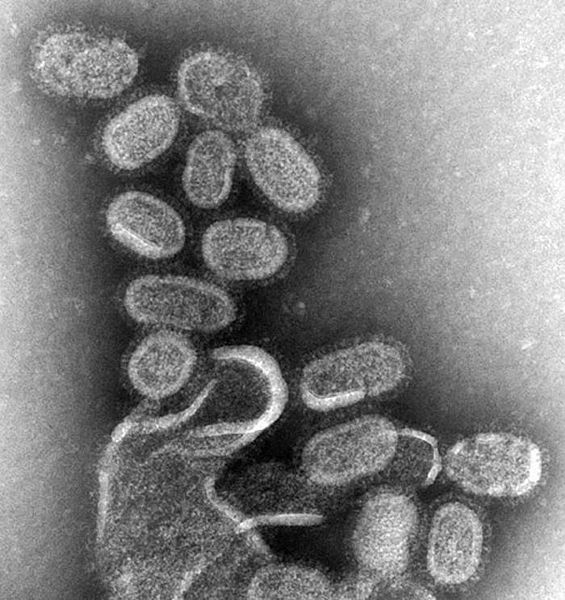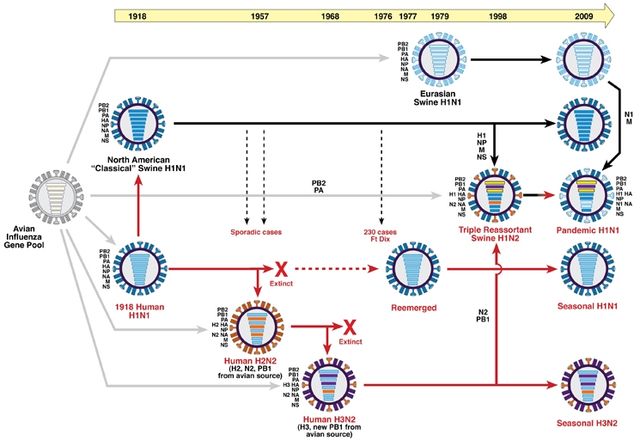Hemagglutinin (influenza)
Influenza hemagglutinin (HA) or haemagglutinin[p] is a homotrimeric glycoprotein found on the surface of influenza viruses and is integral to its infectivity.
Hemagglutinin (influenza)
x-ray structure of the haemagglutinin-esterase-fusion glycoprotein of influenza c virus
Structure of influenza, showing neuraminidase marked as NA and hemagglutinin as HA.
Influenza A virus (IAV) is a pathogen that causes the flu in birds and some mammals, including humans. It is an RNA virus whose subtypes have been isolated from wild birds. Occasionally, it is transmitted from wild to domestic birds, and this may cause severe disease, outbreaks, or human influenza pandemics.
Influenza A virus
A transmission electron micrograph (TEM) of the reconstructed 1918 pandemic influenza virus. The bottom structure represents membrane debris from the cells used to amplify the virus. Pictured are the 'elliptical' particles representing the smallest particles produced by influenza virus. Purification techniques often deform the particles without proper fixation protocols, leading to 'spherical' appearance. Filamentous or intermediate sized particles simply extend along the long axis on the opposite side of the genome segments.
Genetic evolution of human and swine influenza viruses, 1918–2009






